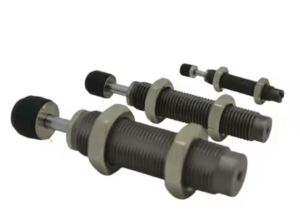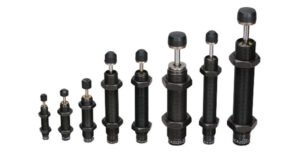The damping buffer is an important part of the mechanical device, which mainly plays the vibration and impact under the external force, so that it will not cause damage to the whole machine or permanent deformation.
Damping buffer is a highly complex design, its main components include elastic element, load element, damper and controller. The following is the principle, types, applications and advantages and disadvantages of damping buffers.

Principle and type of damping buffer
The damping buffer mainly relies on friction and hydraulic resistance to realize the function of damping and damping. Under the action of vibration and impact, the elastic element of the damping buffer and the bearing element will interact, causing the mechanical device to undergo “elastic deformation” and absorb the energy as its own elastic energy. Due to the existence of the damping device, this energy will be converted into heat energy through friction or hydraulic resistance, so as to achieve the effect of vibration absorption.

Damping buffer according to the structure can be divided into: friction damping buffer, hydraulic damping buffer, pneumatic damping buffer and so on. Among them, the friction damping buffer is simple in structure and easy to use, which is mainly used in light load mechanical devices. Hydraulic damping buffer is widely used in large machine tools, aerospace, railway transportation and other fields because of its powerful function and high precision. The pneumatic damping buffer is mainly used in special fields such as explosion-proof and anti-corrosion.
Tex/Fax: 0086-577-62840011
WhatsApp: 0086-13355775769
#Dampingbuffer #buffer #Hydraulicdampingbuffer


